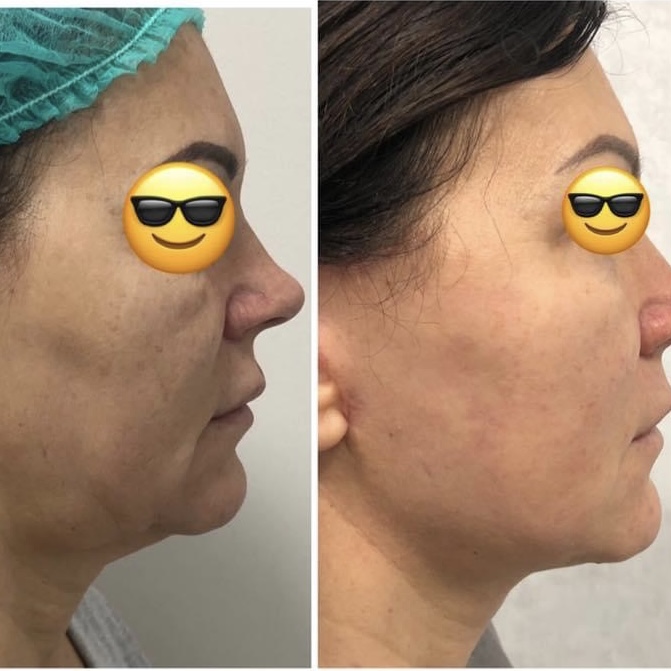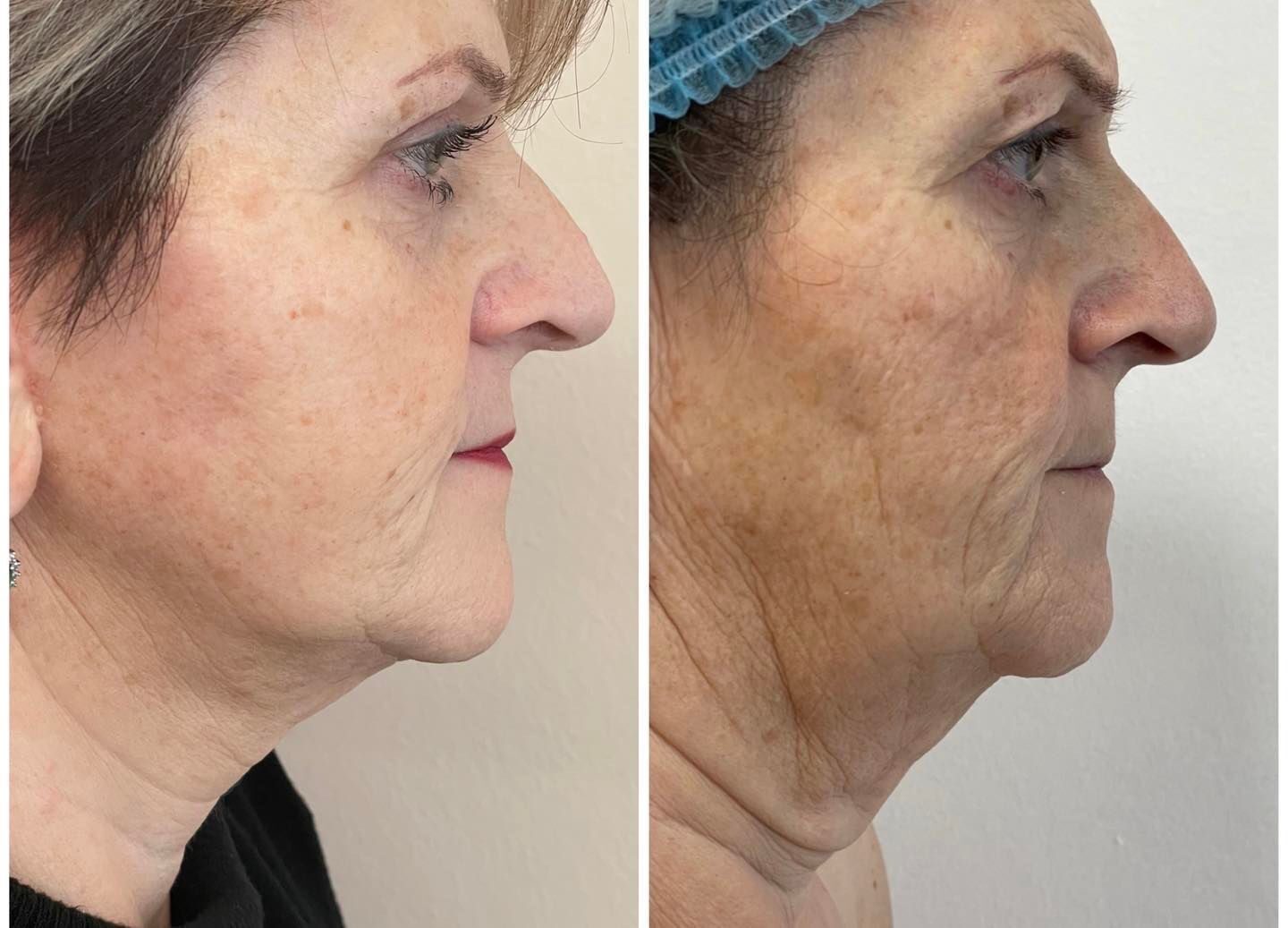Discharge: same day or the following morning
Anesthesia: local with sedation
Execution: 3 hours
Regime: outpatient
Back to social: 25 days
Dressings: 1/5/14 days

FACE LIFT AND MINI LIFT
The term "lifting" which has now entered the common lexicon defines the surgical maneuver that allows the repositioning of facial tissues, which relaxed and migrated downwards due to aging.
In its entirety, the lifting concerns the tissues of the frontal, periorbital region, on the cheekbones, cheeks, nasogenic furrows, on the upper, lower and lateral cervical region. More rarely the wrinkles of the forehead (frontal rhytidectomy), face or cervical region (cervical lift) can be treated separately.
The principle underlying the intervention is the suspension of the descended tissues to stable structures in the preauricular and frontal region, without placing any tension on the skin. This is to ensure durability, excellent results and barely visible scars. The techniques available to achieve this are very varied and only the patient's clinical examination can determine which is the most suitable.
The procedure takes place under general anesthesia or deep sedation, for a duration of less than 3h and 30 '.
The final result is often accentuated by the combination with blepharoplasty (lower or complete) or by suspension of the eyebrow (brow-lift).
If, on the other hand, the patient has limited needs, a modest laxity of the skin of the face and neck, or is not willing to undergo a proper lifting, it is possible to resort to the "mini-lift", less invasive and also less stable over time , but still rewarding in the short to medium term.
POST-OPERATIVE COURSE
Convalescence includes at least 7-10 days of rest, before being able to resume work and at least 20-25 before being able to resume sports. In particular, the day after the surgery, the dressing is lightened, the hair is washed and thinner clean gauze is applied.
Immediately after the surgery, the patient can speak, move the head carefully, eat and carry out the most common domestic maneuvers without limitation. Within a week it is possible to resume daily domestic and even outdoors activities.
After about 8 days a few stitches are removed, the rest will be removed after 14 days. Already at this time the lingering post surgery discomforts are minimal, the already minimal swelling has been reduced even more and some patients can resume social activities.
In the next 15 days there is a complete remission of skin symptoms and the can go back to a normal lifestyle.
The surgery does not create deformity or excessive swelling of the face in the healing phase, it is not painful, it is considered low trauma and home therapy includes an antibiotic and a mild anti-inflammatory.
Long-term surgical signs are almost invisible.
The duration of the benefits obtained over time is rather stable and as always depends on the starting conditions and lifestyle of each patient.
Over the years it is however extremely useful to associate specific aesthetic medicine treatments to optimize skin yield over time.



